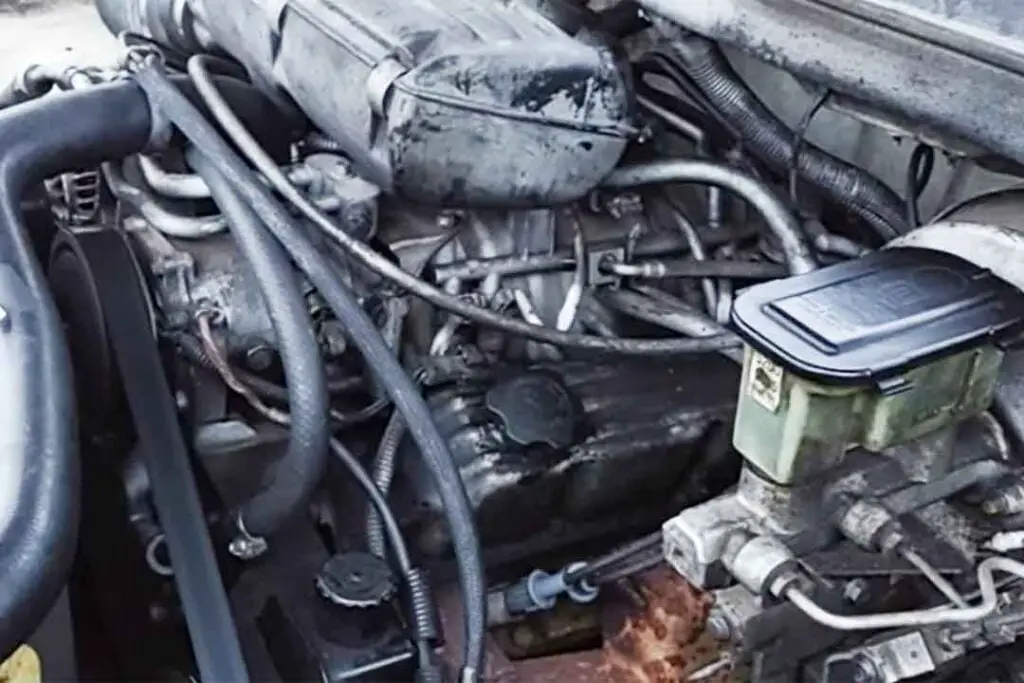The Dodge engine is a vital component of Dodge vehicles, responsible for converting fuel into the power necessary to propel the car. However, as with any mechanical system, engines are subject to problems and malfunctions. The most common 3.9 Dodge engine problems are intake manifold gasket failure, oil sludge buildup, worn or stretched timing chain wear, and faulty valve guide wear.

In this article, I will discuss the symptoms that indicate Dodge 3.9 v6 common problems, the causes of these problems, and the most common solutions that can be implemented to rectify them. Additionally, I’ll offer tips on preventing 3.9 Dodge engine problems and ensure that your engine remains in top working order for years.
Contents
Common Dodge Engine Problems
Before delving into the specific problems commonly associated with the 3.9 Dodge engine, it’s essential to understand some general engine problems that can affect Dodge vehicles. Some of the most common Dodge engine problems include:
Overheating
Overheating is a common problem with many engine types, and Dodge engines are no exception. Various factors, including low coolant levels, a faulty thermostat, a malfunctioning water pump, or a clogged radiator, can cause this.
Engine Misfiring
Misfiring occurs when one or more cylinders in the engine fail to ignite correctly. This can cause the vehicle to run poorly, with symptoms such as a rough idle, hesitation or jerking during acceleration, or reduced power.
Oil Leaks
Oil leaks can occur for various reasons, including worn gaskets, damaged seals, or loose bolts. These leaks can lead to low oil levels, which can cause damage to the engine if left unchecked.
Knocking or Tapping Sounds
These sounds can indicate various issues, including low oil pressure, worn engine bearings, or damaged lifters.
Failure to Start
Various issues, including a dead battery, a faulty starter motor, or a malfunctioning ignition switch, can cause a failure to start.
These are just a few of Dodge vehicles’ most common engine problems. It’s essential to keep an eye out for any unusual symptoms or warning signs and to address any issues as soon as they arise to prevent further damage to the engine.
3.9 Dodge Engine Problems & Solutions:
The 3.9 Dodge engine is a V6 engine used in various Dodge vehicles over the years. While this engine is generally reliable, there are a few problems that have been known to occur:
1. Intake Manifold Gasket Failure
One of the most common problems with the 3.9 Dodge engine is the failure of the intake manifold gasket. This can cause coolant to leak into the engine, leading to overheating and potential engine damage.
Symptoms of an intake manifold gasket failure may include white smoke from the exhaust, a sweet smell from the engine bay, or low coolant levels.If the intake manifold gasket fails, it must be replaced to solve this issue. It may be necessary to replace the complete intake manifold. Also, it’s crucial to look for any corrosion or engine damage brought on by coolants leaking into the engine.
2. Oil Sludge Buildup
Another common problem with the 3.9 Dodge engine is oil sludge buildup. This can occur when the engine oil breaks down and forms a thick sludge, which can clog oil passages and cause damage to the engine. Symptoms of oil sludge buildup may include a drop in oil pressure, engine knocking or tapping sounds, or reduced engine performance.
You may flush the engine to remove the sludge to address oil sludge buildup. Change the oil filter and oil more frequently to prevent further buildup.
Over time, the timing chain in the 3.9 Dodge engine can become worn or stretched, which can cause the engine to run poorly or even fail to start. Symptoms of timing chain wear may include a rattling noise from the engine or difficulty starting the engine.
If the timing chain is worn, you have to replace it to fix it. Sometimes, the tensioner and guides may also need to be replaced. Regular maintenance can help prevent timing chain wear, such as changing the oil and oil filter at the recommended intervals.
3. Valve Guide Wear
Another potential problem with the 3.9 Dodge engine is the wear of the valve guides. This can cause the engine to burn oil, leading to reduced engine performance and possible damage to the engine. Symptoms of valve guide wear may include blue smoke from the exhaust, reduced power or acceleration, or increased oil consumption.
In this case, you have to replace it to fix the problem. Sometimes, the cylinder head may need to be removed to perform the repair. It’s also essential to check for any damage to the valves or cylinder head caused by the worn guides.
Prevention of 3.9 Dodge Engine Problems:
Ensuring the longevity and optimal performance of your 3.9 Dodge engine requires proactive preventive measures. Following these recommendations can help you avoid expensive repairs and keep your car in top condition for many years.
1. Adhere to the Manufacturer’s Maintenance Schedule
One of the most effective ways to safeguard your engine is by diligently following the manufacturer’s recommended maintenance schedule. This comprehensive schedule outlines specific intervals for crucial tasks such as oil and filter changes, tune-ups, and other essential services. Following these instructions can help uncover possible engine problems early and fix them, thus saving you time and money.
2. Opt for High-Quality Oil and Filters
Selecting the right oil and filters is paramount in maintaining a healthy engine. Use only quality oil that complies with all requirements set out by the manufacturer, which comprises the recommended viscosity. This ensures proper lubrication and helps prevent issues like the dreaded oil sludge buildup, which can wreak havoc on your engine’s internals. In addition, high-quality filters play a vital role in keeping contaminants at bay, preserving your engine’s overall health.
3. Regularly Monitor Fluid Levels
Keep an eye out for fluid levels, specifically coolant and oil. Maintaining these fluids at their optimal levels is crucial to prevent potential damage to your engine. Low fluid levels can be detrimental, so make it a habit to top them off as needed.
4. Avoid Harsh Driving Conditions
The driving conditions you expose your 3.9 Dodge engine can significantly impact its health. Be mindful of extreme temperatures, dusty environments, and heavy towing, as they can put undue stress on the engine. Whenever possible, take steps to minimize exposure to these harsh conditions. In cases of extreme heat, consider auxiliary cooling systems, and when towing heavy loads, take regular breaks to relieve stress on the engine.
5. Address Issues Promptly
Last but certainly not least, remain vigilant for any unusual symptoms or warning signs your engine may exhibit, such as engine knocking or oil leaks. When you detect these issues, don’t procrastinate—promptly schedule an inspection with a qualified mechanic. Timely intervention can prevent further damage and help you avoid costly repairs, ensuring your engine remains robust and reliable for the long haul.
Read More:
- How to Turn Off Eco Mode Permanently on Dodge Ram – Eliminate Eco Mode Hassles
- Troubleshoot Battery Saver Mode Dodge Charger with this Expert Guide
Conclusion
The 3.9 Dodge engine is generally reliable, but it can experience common issues like intake manifold gasket failure, oil sludge buildup, timing chain wear, and valve guide wear. These problems can be addressed through solutions like a gasket or part replacement. However, following the manufacturer’s recommended maintenance schedule, using high-quality oil and filters, monitoring fluid levels, avoiding harsh driving conditions, and addressing issues promptly can help prevent these problems. By taking care of your 3.9 Dodge engine and addressing problems promptly, you can ensure long-term reliability and performance for your vehicle.
